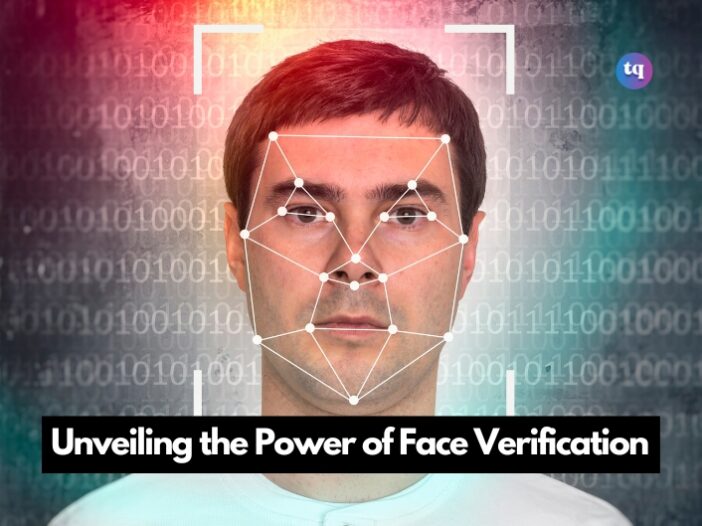
The need for reliable technology regarding identity verification has never been as critical as today. With rapid increases in technology, businesses have to face cyber crimes as imposters use various sophisticated fraud techniques. They use fake IDs and different methods to perform illegal activities such as identity theft, data breaches, and financial terrorism. By leveraging biometric verification such as face verification, organizations empower them to fight against prevailing crimes.
Digital face verification technology harnesses the power of artificial intelligence and machine learning algorithms, which are very sharp and reveal every fraudster attack. It enables organizations to build trustworthy relationships with their clients and make them self credible. This blog post will explore the role of face verification technology regarding security enhancement and supreme business flow across various industries.
Table of Contents
Strength Of Face Verification Technology
The face verification process employs digital facial scanners which utilize the power of AI and ML technology and help organizations to avail the following benefits:
Technological Integration: Face verification technology empowers industries to have technological integration. Businesses are moving toward a digital landscape where they face various cybercrimes. Face verification is the only way to identify fraud attempts and to make organizations secure. It enables organizations to cope with this digital era of technological advancements and has enhanced business operations.
Fraud Prevention: Face verification technology provides biometric feasibility to verify clients’ identities and make the organization secure. Many criminals use faded images and spoofed photos to reach organizations for illegal means. Face verification utilizes AI-powered mechanisms and identify fraudsters.
Enhanced Security: Industries using face recognition empower them with enhanced security through automated AI and ML facial recognizers. Scanners process facial recognition processing and identify the faces of individuals by performing feature analysis. Unique facial features mitigate the risk of identity theft and fake IDs. It enables firms to have real-time face verification along government and private databases. Sophisticated AI and ML algorithms are highly sharp in the identification of spoofing attacks and deep fakes that cannot be detected through the human eye.
User Satisfaction: The face recognition process is also very convenient for users. They just have to face the camera and get themself verified without any physical involvement. Due to automated digital processing methods, individuals feel free to share their specific information.
Biometric face verification methods make organizations credible and enhance business development. Biometric face recognition technology provides quick identification results and mitigates the friction of standing in large queues.
Seamless Onboarding: Face verification technology filters real clients to be onboard and provides an enhanced customer onboarding experience. It mitigates the risk of future complexities and enhances business operations. Many companies offer online face verification and have remote clients all over the globe. It enhances business scalability as well.
Regulatory Obligation: Every company has to comply with certain Know Your Customer rules designed by the government to protect firms from falling prey to criminal attacks. The use of face verification technology provides enhanced KYC compliance and protects industries from future complexities.
Cost-effective: The use of the face verification process provides an automated authentication regarding clients’ identity verification. It also eliminates the need for multiple hirings as in manual verification. The process of face verification is highly cost-effective for organizations with automated AI and ML technology.
Use Cases Of Face Verification Across Various Industries
Many industries use face verification technology because of its benefits regarding business security and development. Some of the major use cases of biometric face verification technology are the following:
Financial institutions: Use face ID checks or facial recognition to overcome the risk of financial terrorism associated with fake IDs. Many imposters use fake IDs to open bank accounts to perform money laundering and illegal transactions. Face verification empowers the finance department to verify clients’ identities before giving them access on board.
Travel Industries: use face verification technology to verify users to avoid travel frauds such as illegal immigration. It enables travel industries to secure from many criminal attacks such as data breaches and payment loss. Many tourism agencies use online registration and payment transfer methods, face verification provides them a security to overcome fraud attempts.
Education sectors: use face verification technology to monitor check-in and out of their staff and to mark students’ attendance. It provides biometric authentication and overcomes proxies. Undoubtedly, the benefits of facial recognition are immense.
Key Takeaways
Biometric face verification technology employs AI and ML mechanisms and helps firms verify their clients’ identities. It empowers firms to overcome various crimes such as money laundering, identity theft, and terrorist financing. Moreover, a strong identity verification process enhances organization security and leads to enhanced business growth and development. The use of face verification technology enables organizations to have enhanced regulatory compliance and avoid every possible future complexity.